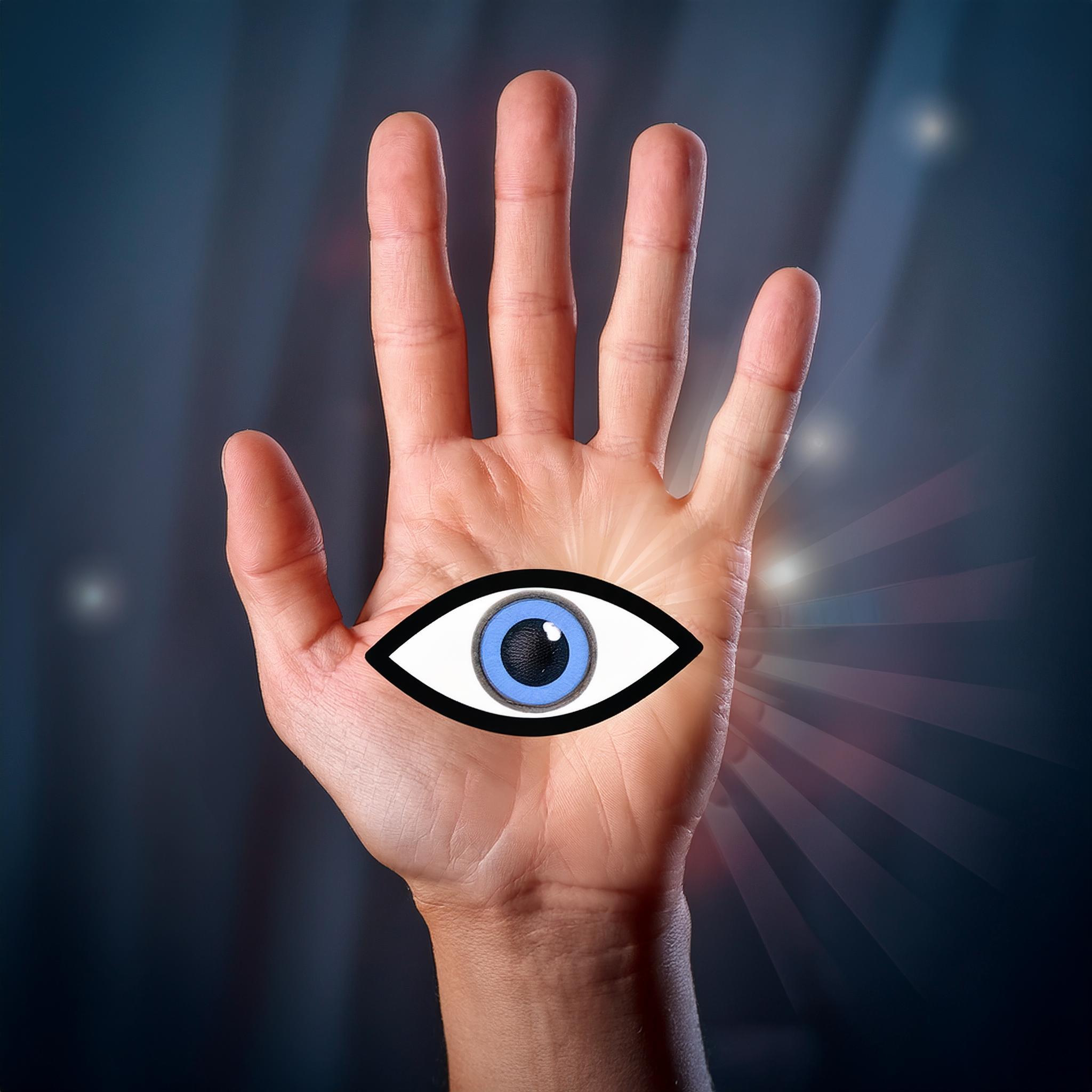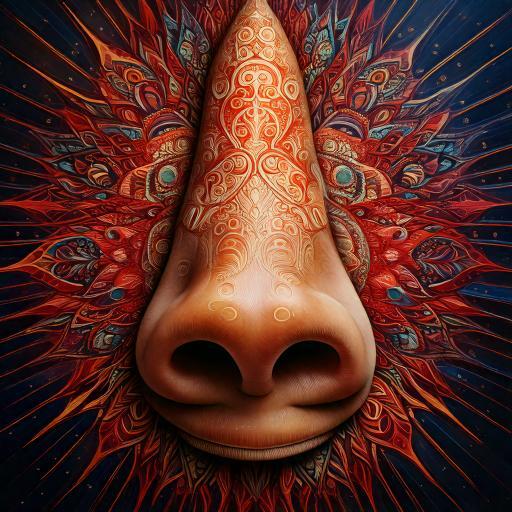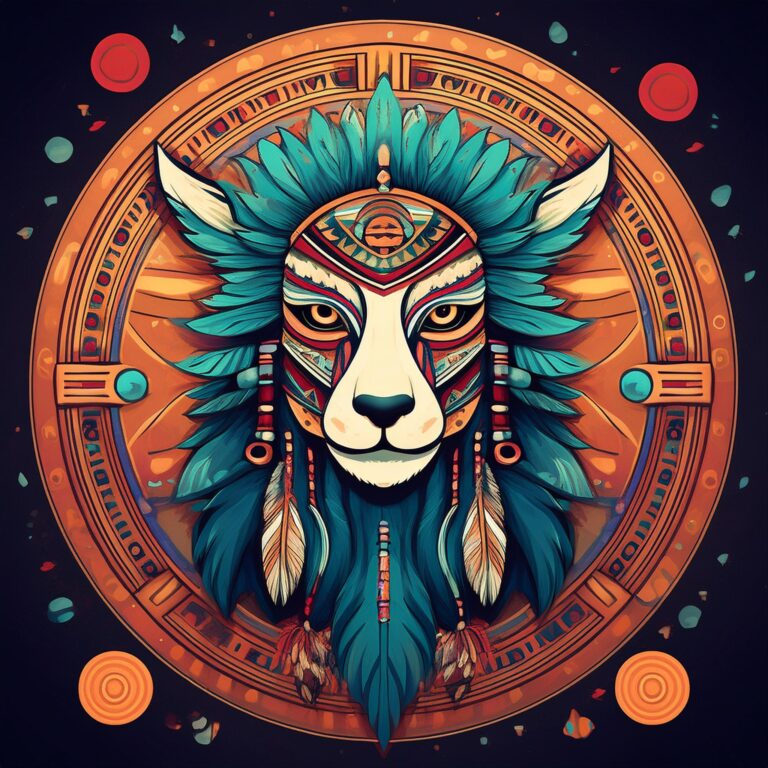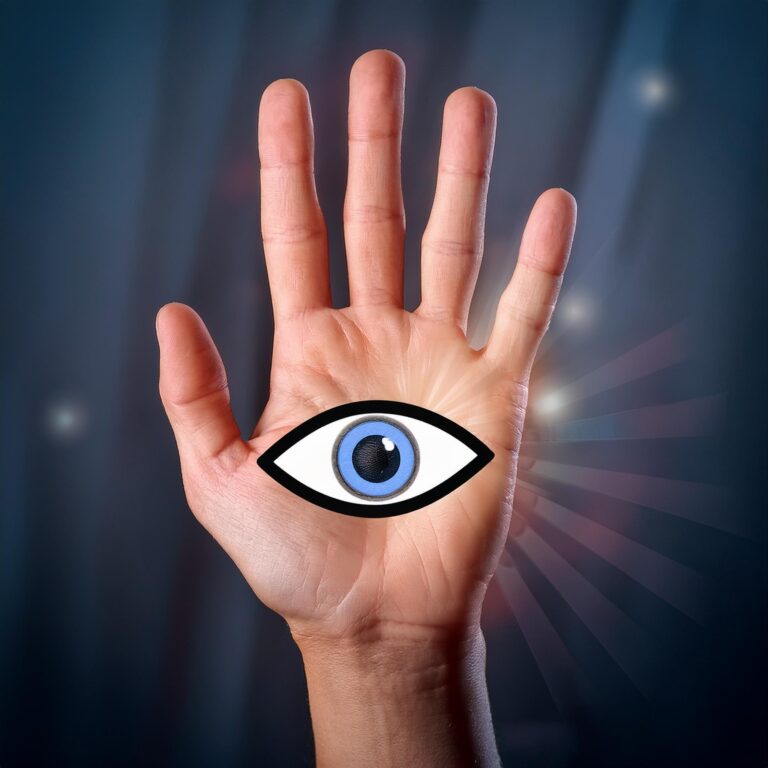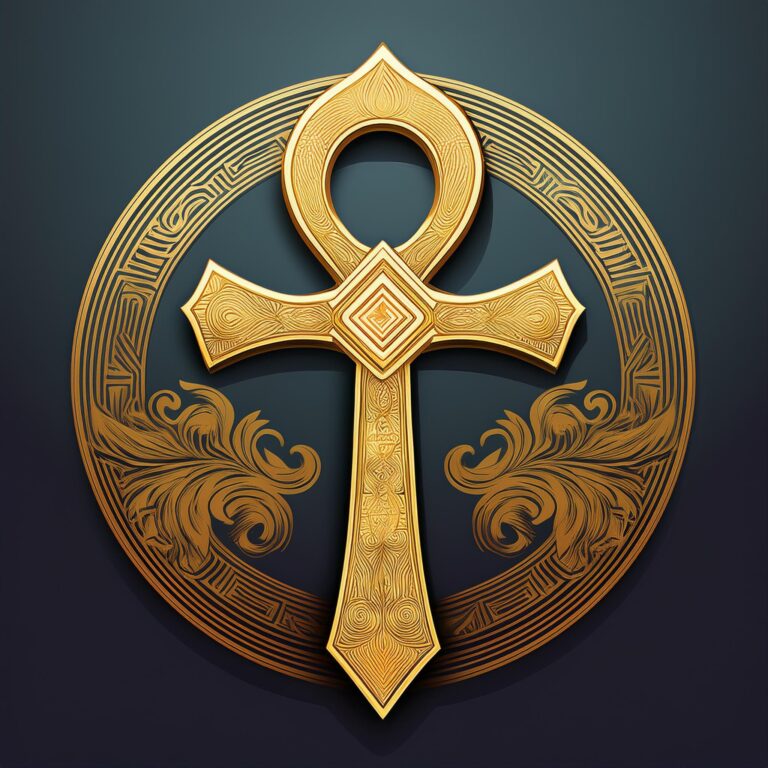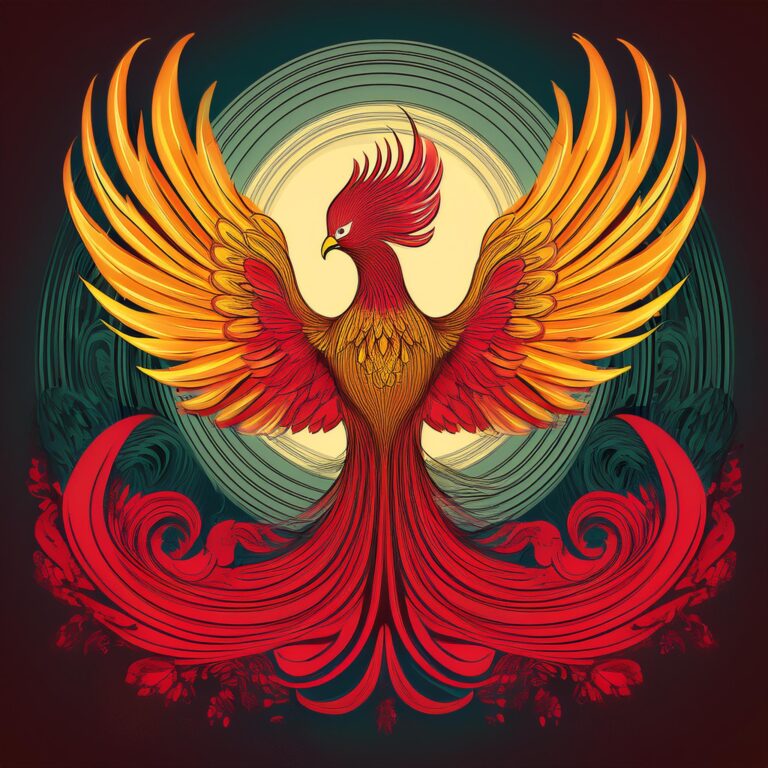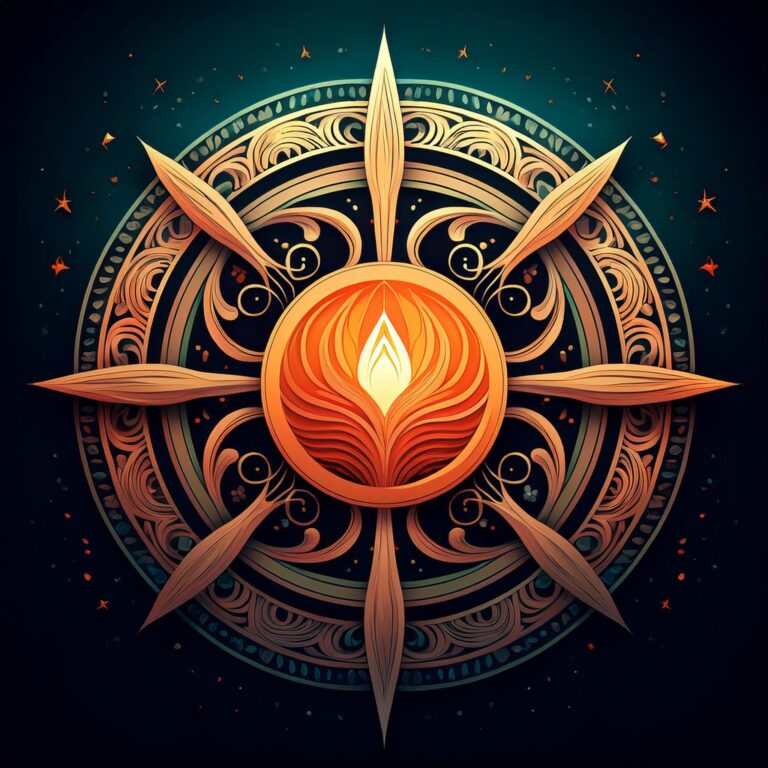The symbol of a hand with an eye has intrigued and captivated people across various cultures and time periods. This enigmatic motif, often depicted as an open hand with an eye at its center, is laden with deep symbolic meanings and has been revered as a powerful emblem of protection, spiritual insight, and divine guidance.
The hand itself is a universal symbol of power and action, representing the ability to influence the world and protect oneself from harm. When combined with the eye, a symbol often associated with awareness, perception, and divine watchfulness, the hand with an eye transforms into a potent talisman believed to ward off evil and bring good fortune.
Historically, this symbol has been most commonly associated with the Hamsa, a hand-shaped amulet found in many cultures of the Middle East and North Africa. In Islamic tradition, it is known as the Hand of Fatima, representing the five pillars of Islam and serving as a protective symbol against the evil eye. In Jewish culture, it is referred to as the Hand of Miriam, symbolizing protection and strength.
Beyond its protective qualities, the hand with an eye also embodies themes of spiritual enlightenment and inner vision. It is seen as a reminder to look beyond the surface of things, to seek deeper truths, and to trust in a higher power that watches over and guides us. In some interpretations, the eye within the hand signifies the presence of a divine force that perceives all actions and intentions, ensuring justice and balance in the world.
This symbol continues to hold significance in modern times, where it is often embraced by those seeking a connection to ancient wisdom or a symbol of protection in an increasingly uncertain world. Whether worn as jewelry, displayed as art, or used in rituals, the hand with an eye remains a powerful emblem of hope, protection, and spiritual awareness.
Introduction to the Symbol of a Hand with an Eye
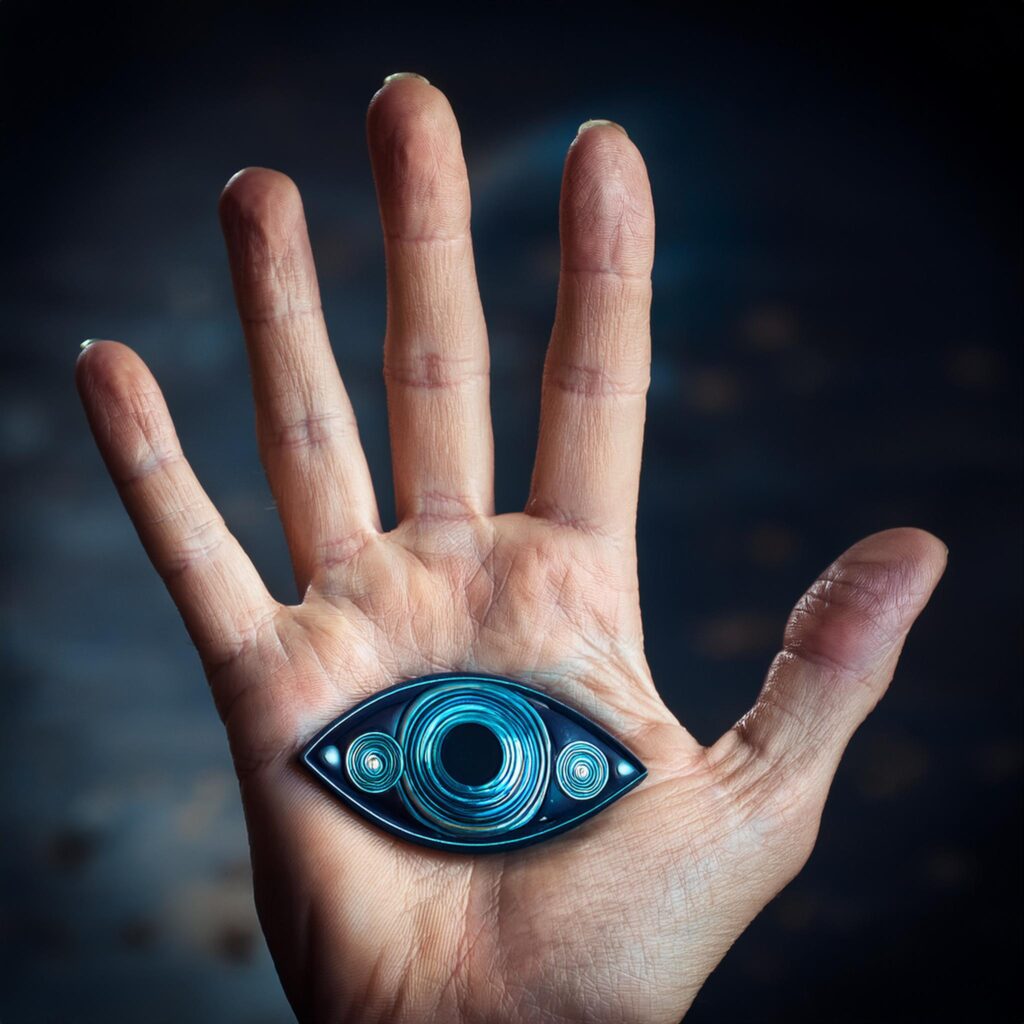
The symbol of a hand with an eye is one of the most intriguing and widely recognized motifs across cultures, often shrouded in mystery and reverence. This symbol, which combines the imagery of an open hand with a single, central eye, carries profound meanings that have been interpreted in various ways throughout history.
The search for symbolic meaning often extends into personal realms, such as astrology and zodiac signs. In Native American culture, zodiac signs are based on a person’s birth date and are connected to animals that embody certain spiritual traits. If you’ve ever wondered, what is my Native American zodiac sign, it’s based on a lunar calendar, with animals like the wolf, bear, and eagle representing different periods of the year, each offering guidance and insight into one’s personality and life path, much like symbols such as the hand with an eye offer protection and spiritual connection.
At its core, the hand represents action, power, and protection. The human hand is an ancient symbol of agency, a tool that can create, destroy, shield, and heal. When this powerful symbol is combined with an eye—traditionally associated with vision, perception, and divine oversight—the result is a potent emblem that signifies not just physical protection, but also spiritual awareness and insight.
The hand with an eye has appeared in numerous cultures, each attributing unique significance to the symbol. It is most commonly associated with the Middle Eastern amulet known as the Hamsa, which serves as a talisman against the evil eye. The eye within the hand is believed to watch over the bearer, protecting them from harm and ensuring that no malevolent forces can affect their life.
In many interpretations, the symbol is also seen as a bridge between the physical and spiritual worlds. The hand anchors the symbol in the tangible, everyday world of action and interaction, while the eye connects it to the unseen realms of intuition, foresight, and divine guidance. This duality makes the hand with an eye a versatile symbol, capable of representing both earthly protection and a higher, spiritual form of guidance.
As we delve deeper into the history and meanings of the hand with an eye, it becomes clear that this symbol is not just a simple icon, but a complex representation of human beliefs about power, protection, and the nature of the divine.
Historical Origins of the Hand with an Eye Symbol
The hand with an eye symbol boasts a rich and varied history, tracing its roots back thousands of years across multiple civilizations. Its origins are deeply intertwined with the cultural and religious practices of the ancient world, where it emerged as a powerful symbol of protection, spirituality, and divine intervention.
One of the earliest known representations of the hand with an eye can be found in the ancient Mesopotamian civilization, where it was associated with the goddess Inanna (or Ishtar). Inanna, the goddess of love, war, and fertility, was often depicted with eyes on her hands, symbolizing her ability to perceive and influence the world around her. This imagery emphasized her role as a protective deity who could ward off evil and ensure the well-being of her followers.
The symbol also holds significant importance in the ancient cultures of Egypt, where the eye—particularly the Eye of Horus—was a powerful emblem of protection, health, and restoration. Although the Eye of Horus is not typically depicted within a hand, its symbolic function aligns closely with the later interpretations of the hand with an eye. The Eye of Horus was believed to have protective and healing powers, similar to the protective qualities attributed to the hand with an eye in later traditions.
In the ancient Levant and Mediterranean regions, the symbol evolved into what is now known as the Hamsa, a hand-shaped amulet commonly used by various cultures to protect against the evil eye. The Hamsa, which first appeared in Carthage (modern-day Tunisia) around 800 BCE, was originally associated with the Phoenician goddess Tanit. It later spread throughout the region, taking on new meanings and associations in Jewish, Christian, and Islamic traditions.
In Islamic culture, the Hamsa became known as the Hand of Fatima, named after the daughter of the Prophet Muhammad. It symbolized faith, patience, and divine protection, with the eye within the hand guarding against jealousy and malevolent forces. In Jewish tradition, the symbol was referred to as the Hand of Miriam, representing divine protection and the Five Books of the Torah.
Throughout history, the hand with an eye symbol has been adapted and reinterpreted by various cultures, each adding layers of meaning to this ancient motif. Its widespread use and enduring presence highlight the universal human desire for protection, guidance, and a connection to the divine.
Cultural Significance Across Different Civilizations
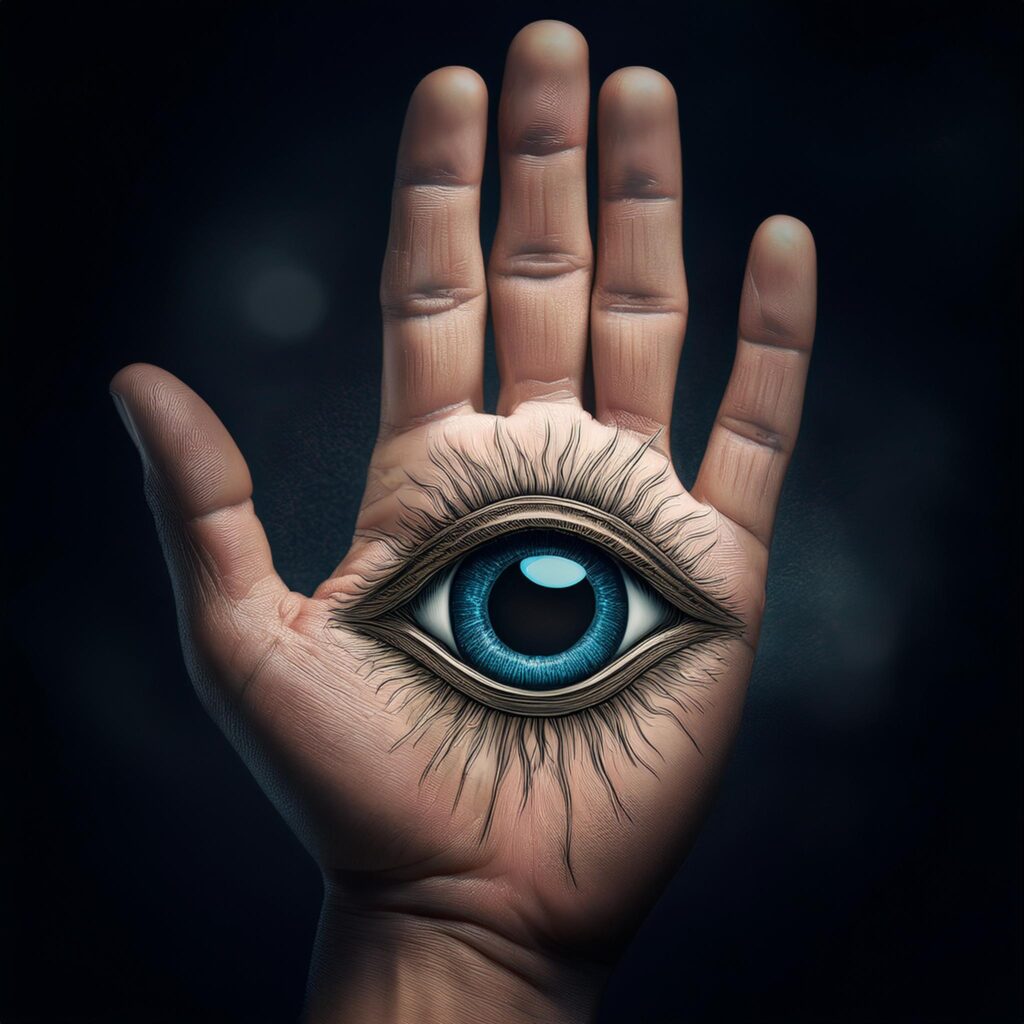
The symbol of a hand with an eye transcends cultural boundaries, holding profound significance across a wide range of civilizations. Its enduring appeal lies in its universal themes of protection, spiritual insight, and divine guidance, making it a powerful emblem in various cultural contexts.
Middle Eastern and North African Cultures
In the Middle East and North Africa, the hand with an eye is most commonly associated with the Hamsa, a symbol that has been revered for centuries as a powerful protective talisman. In Islamic culture, it is known as the Hand of Fatima, named after Fatima Zahra, the daughter of the Prophet Muhammad. The Hamsa is believed to protect against the evil eye, a malicious gaze thought to cause harm or misfortune. The eye at the center of the hand is seen as a vigilant guardian, watching over the bearer and warding off any negative energy.
In Jewish culture, the Hamsa is referred to as the Hand of Miriam, after Miriam, the sister of Moses and Aaron. It represents the divine protection and strength that Miriam provided to her people during their exodus from Egypt. The five fingers of the Hamsa are also symbolic of the five books of the Torah, reinforcing its association with faith and spiritual protection.
Ancient Mediterranean and Levantine Cultures
In ancient Carthage and the surrounding Mediterranean regions, the hand with an eye was linked to the goddess Tanit, a prominent deity in Phoenician and Punic religion. Tanit was a mother goddess associated with fertility, war, and protection. The hand with an eye, often seen on amulets and artifacts from this period, was believed to invoke her protective powers and ensure the safety and well-being of those who wore it.
South Asian Cultures
In South Asia, particularly within Hindu and Buddhist traditions, the symbol of a hand with an eye can be seen in various forms, such as the depiction of deities with multiple arms, each holding an eye. These representations emphasize the deity’s omnipresence and ability to perceive all things, embodying the themes of divine protection and spiritual insight. In some interpretations, the eye within the hand signifies the inner vision that guides one’s actions according to dharma (moral order) and truth.
Western Esotericism and Modern Interpretations
In Western esotericism, the hand with an eye has been adopted as a symbol of inner wisdom and the search for hidden knowledge. The symbol has found its place in various occult and mystical traditions, where it represents the idea of opening oneself to higher consciousness and divine guidance. In contemporary times, the symbol is often seen as a representation of spiritual awakening, intuition, and the connection between the physical and spiritual worlds.
Across these diverse cultures, the hand with an eye remains a powerful symbol, embodying universal concepts of protection, perception, and spiritual guidance. Its continued relevance speaks to the enduring human desire for safety, wisdom, and connection to the divine, making it a timeless emblem of hope and strength.
The Hand with an Eye in Religious Contexts
The symbol of a hand with an eye holds a significant place in the religious and spiritual traditions of various cultures, where it is revered as a potent emblem of divine protection, spiritual insight, and moral guidance. Across different faiths, this symbol has been interpreted and adapted to reflect the unique theological perspectives and beliefs of each religion.
Islamic Tradition: The Hand of Fatima
In Islamic tradition, the hand with an eye is most commonly associated with the Hand of Fatima, or the Hamsa. Named after Fatima Zahra, the daughter of the Prophet Muhammad, the Hand of Fatima is a widely recognized symbol of protection and faith in Islamic culture. The five fingers of the Hamsa represent the Five Pillars of Islam—faith, prayer, charity, fasting, and pilgrimage—serving as a reminder of the core principles that guide a Muslim’s life.
The eye within the hand is believed to ward off the evil eye, a malevolent force that can bring harm or misfortune. In this context, the Hamsa serves not only as a protective talisman but also as a symbol of divine watchfulness, reminding believers that they are under the constant protection and guidance of Allah. It is often used in amulets, jewelry, and wall hangings to provide spiritual protection and bring blessings to the household.
Judaism: The Hand of Miriam
In Jewish tradition, the hand with an eye is known as the Hand of Miriam, named after the sister of Moses and Aaron. Miriam is celebrated as a strong and protective figure in Jewish history, and the Hamsa symbolizes the protective and guiding hand of God over the Jewish people. The five fingers of the Hamsa are said to represent the five books of the Torah, reinforcing its connection to Jewish law and spiritual guidance.
The eye within the hand, similar to its Islamic counterpart, is seen as a protective element that wards off the evil eye. The Hand of Miriam is often used in Jewish homes and rituals as a symbol of divine protection, ensuring the well-being and prosperity of the family. It is also a reminder of the importance of faith, resilience, and the enduring protection provided by God.
Christianity and the Early Church
While the hand with an eye is not as prominent in Christian symbolism as in other religious traditions, it does appear in some early Christian art and iconography. The open hand is often used to represent the hand of God, particularly in depictions of divine intervention or blessings. In some early Christian mosaics and frescoes, the hand of God is depicted with an eye, symbolizing divine omniscience and the all-seeing nature of God. This imagery emphasizes the belief that God watches over all creation, guiding and protecting the faithful.
Hinduism and Buddhism
In Hindu and Buddhist contexts, the hand with an eye can be linked to various depictions of deities that embody spiritual vision and protection. In Hinduism, for example, the god Shiva is sometimes depicted with an eye on his forehead, symbolizing his ability to see beyond the physical world and into the spiritual realm. This “third eye” represents divine wisdom and insight, qualities that are also associated with the hand with an eye symbol.
In Buddhism, the hand with an eye can be connected to the concept of “mindfulness” or “awareness,” where the eye symbolizes the inner vision that perceives the true nature of reality. The hand, often seen in various mudras (symbolic hand gestures), represents the actions guided by this inner vision, leading to enlightenment and liberation from suffering.
Esoteric and Mystical Traditions
Beyond the major world religions, the hand with an eye has been embraced by various esoteric and mystical traditions as a symbol of spiritual insight and divine protection. In these contexts, the symbol is often associated with the idea of “the third eye,” a mystical concept that represents the ability to perceive spiritual truths beyond ordinary human sight. The hand, as a tool of action, combined with the eye, as a tool of perception, creates a powerful symbol of the union between knowledge and action in the pursuit of spiritual enlightenment.
Across these diverse religious contexts, the hand with an eye remains a powerful and revered symbol, representing the intersection of human action, divine guidance, and spiritual protection. Its continued use and significance highlight the deep-rooted human desire to connect with the divine and seek protection and insight in a complex and often uncertain world.
Interpretations in Modern Times
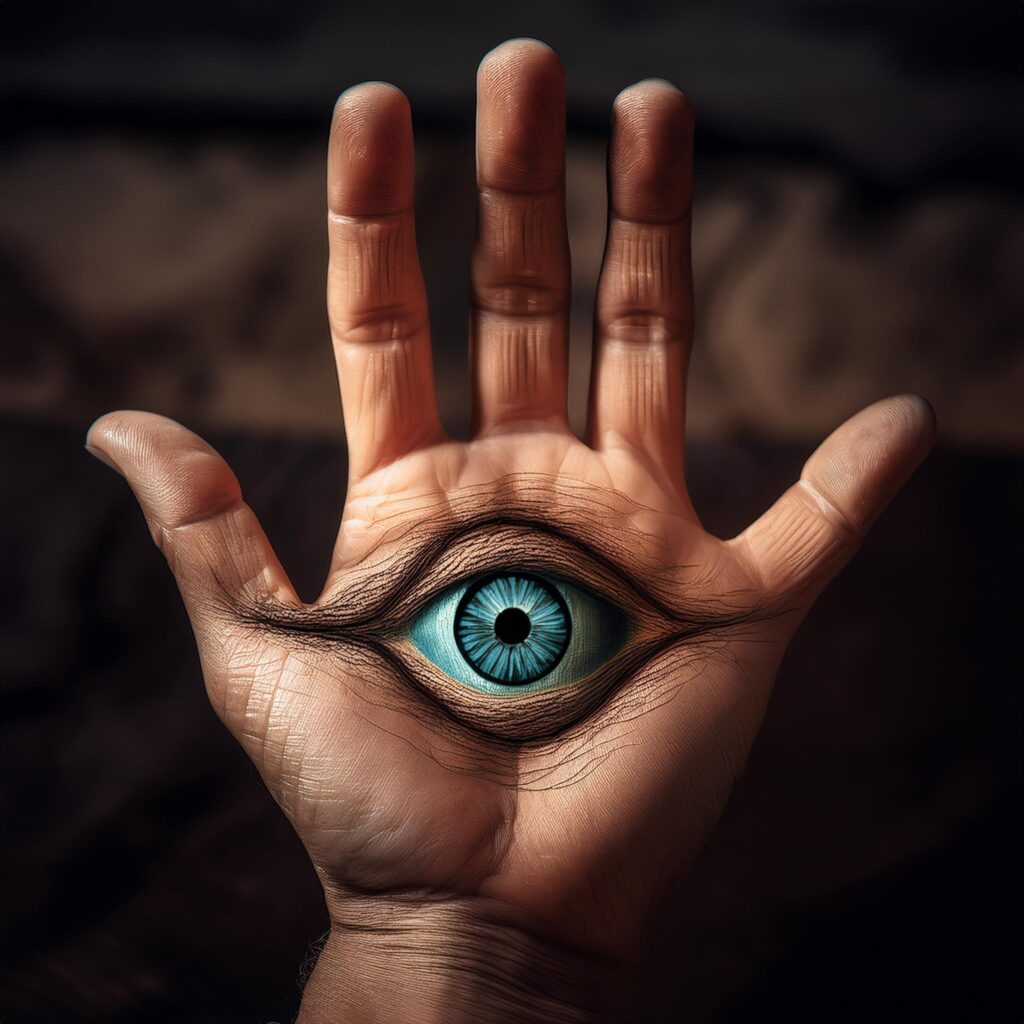
In modern times, the symbol of a hand with an eye has transcended its ancient origins to take on new meanings and interpretations, resonating with contemporary audiences in a variety of ways. While it continues to be associated with its traditional roles as a protective talisman and spiritual emblem, the hand with an eye has also been reinterpreted through the lenses of modern spirituality, art, and popular culture.
A Symbol of Protection and Empowerment
In today’s world, the hand with an eye is often embraced as a symbol of protection, much like it was in ancient times. Many people wear the symbol as jewelry or display it in their homes, believing that it will shield them from negative energies, harmful intentions, and misfortune. The eye, often referred to as the “evil eye” in this context, is seen as a vigilant guardian that watches over the individual, offering a sense of security and peace of mind in an increasingly uncertain world.
Beyond its protective qualities, the symbol has also come to represent personal empowerment. The open hand signifies action, agency, and the power to shape one’s destiny, while the eye embodies awareness and insight. Together, they form a powerful emblem of self-determination, encouraging individuals to take control of their lives while remaining aware of the spiritual and emotional forces at play around them.
A Sign of Spiritual Awakening and Inner Vision
As interest in alternative spirituality and mindfulness practices has grown, the hand with an eye has become a popular symbol for those exploring inner vision and spiritual awakening. The eye within the hand is often interpreted as a representation of the “third eye,” a concept found in many spiritual traditions that symbolizes the ability to perceive deeper truths and gain insight beyond ordinary perception.
In this context, the hand with an eye serves as a reminder to look within and trust one’s intuition, encouraging a deeper connection to the spiritual self. It is often used in meditation and mindfulness practices, where it represents the balance between action (the hand) and perception (the eye), guiding individuals towards a more enlightened state of being.
A Symbol in Contemporary Art and Culture
The hand with an eye has also found its place in contemporary art and popular culture, where it is often used to convey themes of mystery, protection, and spiritual insight. Artists and designers frequently incorporate the symbol into their work, using it to evoke a sense of the mystical or the esoteric. It is common to see the hand with an eye in modern tattoos, fashion, and graphic design, where it serves as a visually striking motif that carries deep symbolic meaning.
In popular culture, the symbol has been adopted by various subcultures and movements, often as a sign of resistance against negative influences or as a statement of individual empowerment. Its use in these contexts reflects a broader trend of reappropriating ancient symbols to express modern values and beliefs, blending traditional meanings with contemporary interpretations.
New Age and Esoteric Movements
The hand with an eye has been widely embraced by New Age and esoteric movements, where it is often seen as a symbol of the convergence between the physical and spiritual worlds. In these circles, the symbol is used to represent the unity of mind, body, and spirit, and is believed to aid in the opening of the third eye, enhancing psychic abilities and spiritual awareness.
Practitioners of these traditions may use the symbol in rituals, meditations, or as part of their spiritual practice, believing that it can help them tap into higher levels of consciousness and connect with divine energies. The hand with an eye, in this context, serves as a powerful tool for those seeking to expand their spiritual horizons and explore the deeper mysteries of the universe.
A Universal Emblem of Connection
In the modern era, the hand with an eye has also come to symbolize the interconnectedness of all things. The hand represents humanity’s ability to act and shape the world, while the eye symbolizes the awareness that all actions have consequences, both seen and unseen. Together, they form a symbol of universal connection, reminding us of the delicate balance between our individual actions and the broader impact they have on the world around us.
This interpretation resonates particularly in a time when global challenges such as environmental issues, social justice, and technological change demand a greater awareness of our collective responsibilities. The hand with an eye, in this sense, encourages us to act with wisdom, foresight, and compassion, recognizing the profound interconnectedness of all life.
Through these various modern interpretations, the hand with an eye continues to be a symbol of enduring relevance, bridging the gap between ancient wisdom and contemporary life. Whether viewed as a talisman of protection, a marker of spiritual awakening, or a statement of personal empowerment, it remains a powerful and versatile emblem that speaks to the universal human experience.
Common Misconceptions About the Symbol
The symbol of a hand with an eye, despite its widespread use and deep-rooted history, is often subject to various misconceptions. These misunderstandings can obscure its true meaning and cultural significance, leading to confusion or misinterpretation. Here, we address some of the most common misconceptions surrounding this powerful symbol.
Misconception 1: The Symbol Always Represents the “Evil Eye”
One of the most prevalent misconceptions is that the hand with an eye solely represents the “evil eye” itself, rather than a protective amulet against it. In reality, the symbol is designed to ward off the evil eye—a malevolent gaze believed to cause harm or misfortune. The eye within the hand is not a representation of this curse but rather a vigilant guardian that protects the wearer from its effects. This distinction is crucial, as the symbol is intended to provide safety and protection, not to embody negativity.
Misconception 2: The Symbol Has a Single, Universal Meaning
Another common misconception is that the hand with an eye has a singular, universal meaning across all cultures and contexts. In truth, the symbol has been interpreted differently by various civilizations throughout history. For example, in Islamic tradition, it is known as the Hand of Fatima and is associated with faith and protection, while in Jewish culture, it is called the Hand of Miriam and symbolizes divine protection and strength. Additionally, modern interpretations often focus on themes of personal empowerment, spiritual insight, and inner vision. The symbol’s meaning can vary significantly depending on cultural, religious, and individual perspectives.
Misconception 3: The Hand with an Eye Is Exclusively a Religious Symbol
While the hand with an eye has deep religious roots, particularly in Islamic and Jewish traditions, it is not exclusively a religious symbol. In contemporary times, it has been adopted by people of various faiths and spiritual beliefs, as well as those who may not adhere to any specific religion. The symbol has become a more universal emblem of protection, awareness, and empowerment, transcending its original religious connotations. Its use in modern art, fashion, and popular culture demonstrates its adaptability and broad appeal beyond strictly religious contexts.
Misconception 4: The Symbol Is Associated with Dark Magic or the Occult
Some people mistakenly associate the hand with an eye with dark magic or occult practices, likely due to its mysterious and esoteric appearance. However, the symbol has traditionally been used for protection and positive spiritual purposes. While it has been embraced by some esoteric and mystical traditions, it is primarily a symbol of light, guidance, and protection against harm. Its roots are firmly planted in benevolent practices, and its widespread use in various cultures underscores its role as a positive force rather than one associated with darkness or malevolence.
Misconception 5: The Symbol Is a Modern Invention
Another misconception is that the hand with an eye is a relatively recent symbol, popularized in modern times through fashion and pop culture. In fact, the symbol has ancient origins, with its use dating back thousands of years to civilizations such as ancient Mesopotamia, Egypt, and Carthage. Its evolution over time has seen it adapted and reinterpreted by different cultures, but its core themes of protection, spiritual insight, and divine guidance have remained consistent. The modern popularity of the symbol is a continuation of this long-standing tradition, rather than a new or trendy invention.
Misconception 6: The Hand with an Eye Is Always Depicted in the Same Way
Many people assume that the hand with an eye is always depicted in the same style or form, leading to confusion when they encounter variations. In reality, the symbol can take on many different artistic interpretations, depending on cultural and individual influences. The hand may be depicted upright or downward, with fingers spread or close together, and the eye can vary in size, shape, and style. These variations do not diminish the symbol’s meaning but rather reflect its versatility and adaptability across different artistic and cultural contexts.
Addressing these misconceptions helps to clarify the true significance of the hand with an eye symbol, allowing for a deeper understanding and appreciation of its rich history and cultural impact. By recognizing the diversity of its meanings and interpretations, we can better appreciate the symbol’s enduring relevance in both ancient and modern contexts.
Reader-Requested Symbols Related to the Hand with an Eye
Our readers have shown great interest in exploring symbols that share thematic or visual similarities with the hand with an eye. These related symbols often carry complementary meanings, such as protection, spiritual insight, or divine guidance, making them intriguing counterparts to the hand with an eye. Here, we delve into some of the most requested symbols, examining their origins, meanings, and connections to this iconic motif.
The Eye of Horus
One of the most frequently requested symbols is the Eye of Horus, an ancient Egyptian emblem known for its protective and restorative qualities. The Eye of Horus, also known as the “Wadjet,” represents the eye of the falcon-headed god Horus. According to mythology, Horus lost his eye in a battle with the god Set, but it was later restored by the god Thoth. As a result, the Eye of Horus came to symbolize healing, protection, and the power of regeneration.
The connection between the Eye of Horus and the hand with an eye lies in their shared emphasis on protection and divine oversight. Both symbols serve as guardians against harm, watching over those who invoke their power. The Eye of Horus is often depicted in amulets and talismans, much like the hand with an eye, to provide spiritual and physical protection to the wearer.
The Hamsa
The Hamsa, or the “Hand of Fatima” in Islamic tradition and the “Hand of Miriam” in Jewish culture, is directly related to the hand with an eye symbol. The Hamsa is one of the most widely recognized symbols in Middle Eastern and North African cultures, symbolizing protection against the evil eye and bringing blessings, strength, and luck.
The Hamsa often features an eye at the center of the palm, reinforcing its role as a protective amulet. The eye within the Hamsa, like the hand with an eye, is believed to ward off negative energies and offer a shield against malevolent forces. The symbolism of the Hamsa aligns closely with that of the hand with an eye, making it a natural extension of the same themes of protection and spiritual insight.
The Third Eye
The concept of the “third eye” is another symbol frequently associated with the hand with an eye. The third eye, often depicted as an eye on the forehead, represents spiritual enlightenment, inner wisdom, and the ability to perceive truths beyond ordinary sight. It is a common symbol in Hinduism, Buddhism, and various esoteric traditions.
The third eye shares a symbolic resonance with the hand with an eye, as both emphasize the importance of seeing beyond the physical world and gaining insight into deeper spiritual realities. The hand with an eye can be seen as a more tangible representation of the third eye’s mystical qualities, combining action (the hand) with spiritual vision (the eye).
The Evil Eye
The “evil eye” itself is a concept rather than a symbol, but it is often represented by various protective symbols, including the hand with an eye. The evil eye is a belief that a malicious gaze can cause harm, misfortune, or injury, particularly if one is the object of envy or jealousy.
In response to this belief, cultures around the world have developed symbols to ward off the evil eye. The hand with an eye is one such symbol, designed to reflect the evil gaze back upon the one who casts it, thereby neutralizing its harmful effects. Other symbols that serve a similar purpose include the blue Nazar amulet, commonly found in Turkey and Greece, which is often shaped like an eye and is believed to deflect the evil eye’s power.
The Om Symbol
Although visually distinct from the hand with an eye, the Om symbol from Hinduism is another reader-requested emblem that shares thematic connections. Om is considered the sound of the universe, representing the essence of ultimate reality and consciousness. It is often associated with meditation, spiritual awakening, and the attainment of higher states of awareness.
The hand with an eye, particularly in its modern interpretation, also represents spiritual awakening and the pursuit of deeper truths. While the Om symbol focuses on the auditory and vibrational aspects of spirituality, the hand with an eye complements this by symbolizing the visual and perceptive dimensions of spiritual insight.
These reader-requested symbols highlight the diverse ways in which cultures around the world have sought to express similar ideas of protection, spiritual awareness, and divine guidance. By exploring these related symbols, we can gain a richer understanding of the hand with an eye and its place within a broader tapestry of human symbolism.
Similar Symbols to the Hand with an Eye
The symbol of a hand with an eye is part of a broader family of symbols that share similar themes of protection, spiritual insight, and divine watchfulness. These symbols, though varied in their cultural origins and specific meanings, often carry analogous connotations, making them intriguing counterparts to the hand with an eye. Below is a table that highlights some of the most similar symbols, their meanings, and their cultural significance.
| Symbol | Meaning | Cultural Significance |
|---|---|---|
| Hamsa | Protection, luck, and blessings | Predominantly used in Middle Eastern and North African cultures, the Hamsa is believed to protect against the evil eye and bring good fortune. Often depicted with an eye in the center. |
| Eye of Horus | Protection, healing, and restoration | An ancient Egyptian symbol representing the eye of the god Horus, it symbolizes health, protection, and rejuvenation. Frequently used in amulets and jewelry for its protective powers. |
| Third Eye | Spiritual insight, intuition, and enlightenment | Common in Hindu and Buddhist traditions, the third eye represents the ability to see beyond the physical realm, offering wisdom and a deeper understanding of the universe. |
| Nazar (Evil Eye) | Protection from the evil eye and negative energies | A blue amulet shaped like an eye, commonly found in Turkey and Greece. It is believed to ward off the evil eye and protect the wearer from harm caused by envy or malevolence. |
| Mano Fico | Protection and warding off evil spirits | A symbol originating from ancient Rome, the Mano Fico (hand showing a fig gesture) is believed to protect against the evil eye and bad luck, often used as a charm or amulet. |
| Pentacle | Protection, balance, and spiritual connection | In Wiccan and other pagan traditions, the pentacle is a five-pointed star within a circle, symbolizing protection, the elements, and the connection between the physical and spiritual realms. |
| Khamsa | Similar to the Hamsa, symbolizes protection | The Khamsa, often used interchangeably with the Hamsa, is a hand-shaped symbol used across different cultures to offer protection and bring blessings, often featuring an eye at the center. |
Each of these symbols, like the hand with an eye, serves as a powerful emblem of protection and spiritual insight. While they may vary in appearance and specific cultural associations, they all share a common purpose: to safeguard the individual and provide a connection to the divine or the spiritual realm. Understanding these similarities allows for a deeper appreciation of how different cultures have sought to address universal concerns through symbolism.
Frequently Asked Questions (FAQ)
As the hand with an eye symbol continues to captivate the curiosity of many, several common questions arise regarding its meaning, origins, and use. Below, we address some of the most frequently asked questions to provide clarity and deeper understanding of this enigmatic symbol.
The hand with an eye symbol has ancient origins, with its roots tracing back to various civilizations, including Mesopotamia, ancient Egypt, and the Phoenician culture. Over time, it has been adopted and adapted by numerous cultures, such as Islamic and Jewish traditions, where it is known as the Hamsa or the Hand of Fatima/Miriam.
The symbol primarily represents protection against negative energies, such as the evil eye, and serves as a guardian against harm. Additionally, the eye within the hand can symbolize spiritual insight, awareness, and divine watchfulness, making it a powerful emblem of both physical and spiritual protection.
While the hand with an eye has significant religious connotations, particularly in Islamic and Jewish traditions, it is not exclusively religious. In modern times, it has become a universal symbol used by people of various faiths, as well as those with secular or spiritual beliefs, as a protective and empowering emblem.
Today, the symbol is widely used in various forms, including jewelry, tattoos, home decor, and art. People often wear it as an amulet or display it in their homes to ward off negative energies and bring protection. It is also a popular motif in contemporary art and fashion, where it is valued for its aesthetic appeal and deep symbolic meaning.
Yes, the symbol can be depicted in various styles, depending on cultural and artistic influences. For example, the Hamsa may feature fingers spread apart or close together, and the eye can vary in size and design. These variations reflect the symbol’s adaptability and its widespread use across different cultures.
Yes, the hand with an eye symbol is universally embraced and can be worn or used by anyone, regardless of religious or cultural background. It is generally seen as a positive and protective symbol, making it accessible to people from all walks of life who seek its protective qualities.
Other symbols that share similar meanings include the Eye of Horus, the Hamsa, the Nazar (evil eye amulet), the Third Eye, and the Pentacle. These symbols also represent protection, spiritual insight, and the connection between the physical and spiritual worlds.
The hand with an eye symbol is generally associated with positive meanings, such as protection, guidance, and spiritual awareness. While some might mistakenly associate it with dark magic or the occult due to its mysterious appearance, its historical and cultural significance is rooted in benevolent and protective intentions.
You can incorporate the hand with an eye symbol into your life in various ways, such as wearing it as jewelry, using it as a talisman in your home or workplace, or incorporating it into your personal spiritual practices. It can serve as a constant reminder of protection, awareness, and the connection to higher spiritual forces.

I’m the editor at SymbolsSays, where I explore the deeper meanings of symbols in mythology, art, literature, and psychology. My goal is to provide insights into how symbols influence our lives and connect us to our past.
